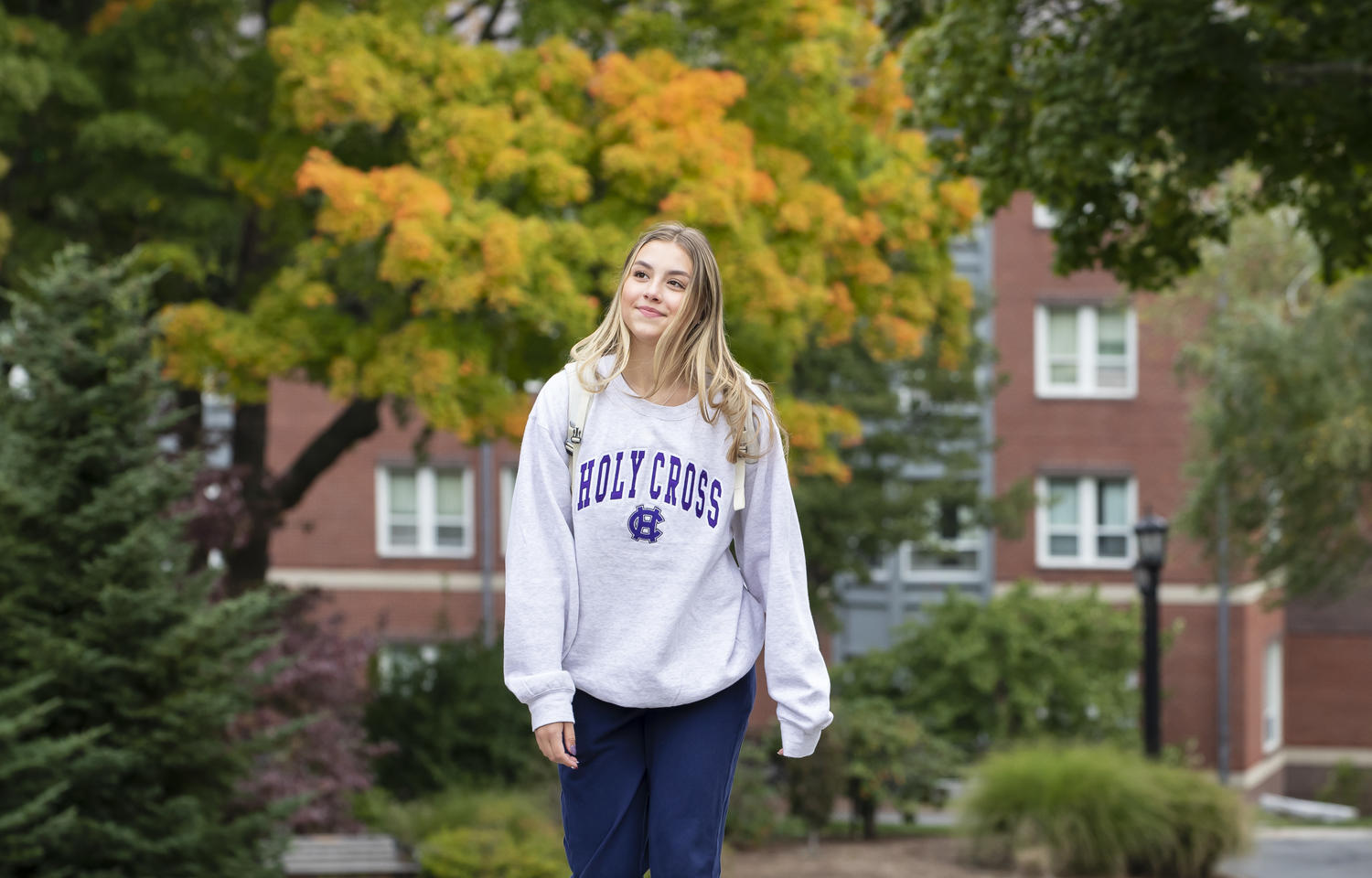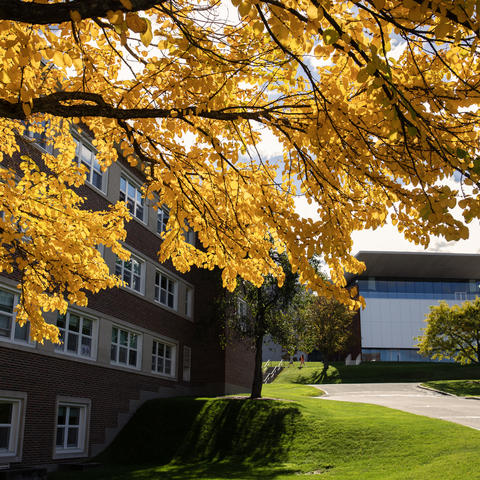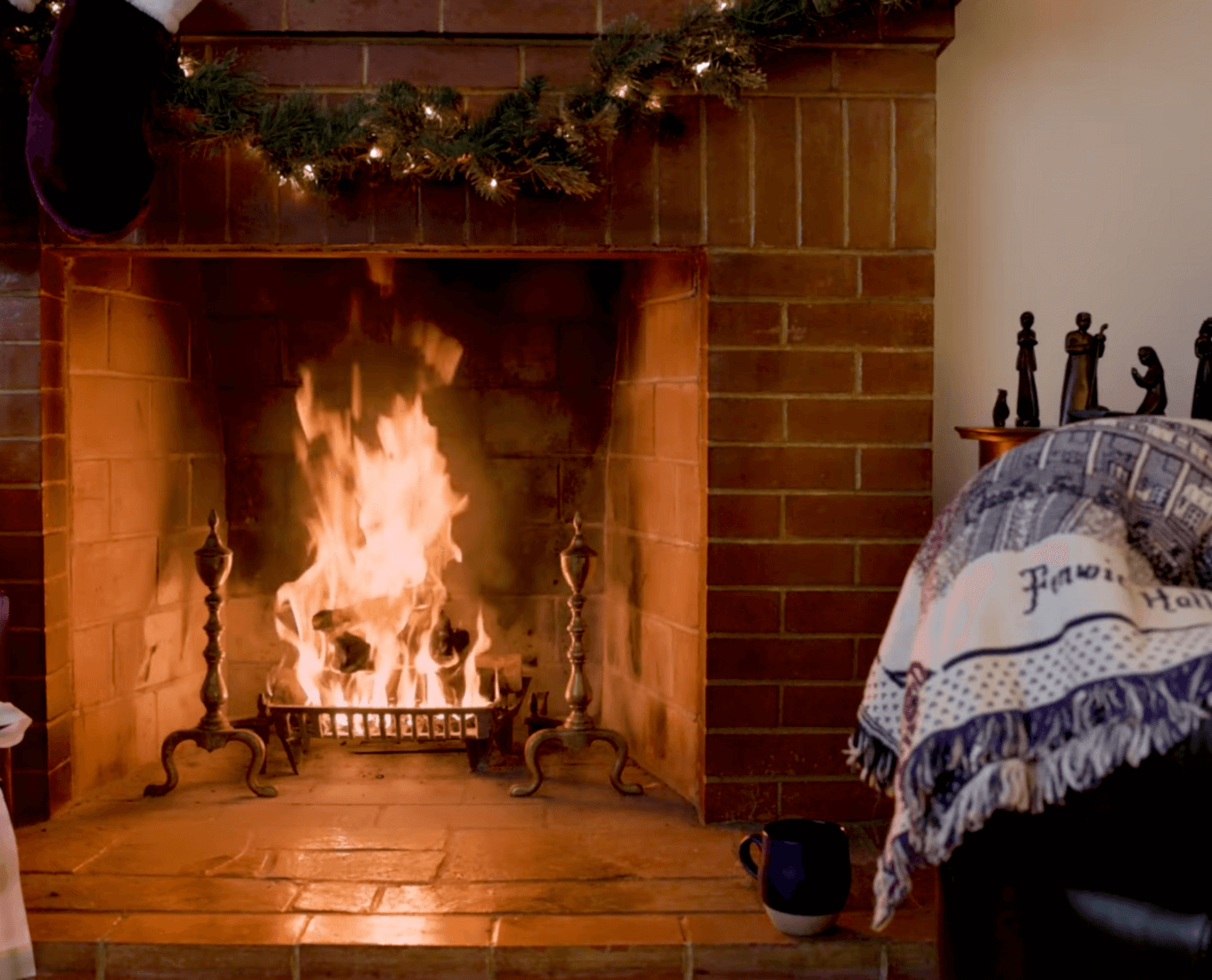As the new academic year begins to establish a rhythm, shorts are soon replaced with sweatpants, the sun sets on The Hill earlier and earlier, and the ivy covering brick buildings trades its pop of green for shades of orange and red.
Beyond those iconic ivy-covered buildings, during the fall the College of the Holy Cross offers a unique perspective for leaf peepers – whether they live in the city or have traveled thousands of miles to see the changing of the leaves.
Sitting atop one of the highest summits of Worcester’s seven hills, the campus provides unrivaled views of the lush forestry surrounding the city. The College's 174-acre campus is also an arboretum, home to 115 varieties of trees and shrubs, meaning anyone walking around campus likely isn’t far from a tree ditching its greenery for oranges, yellows and reds.
The College of the Holy Cross sits on one of Worcester tallest hills, providing unique views when the leaves begin to change color in the fall. (Photo by Michael Ivins/Holy Cross)




